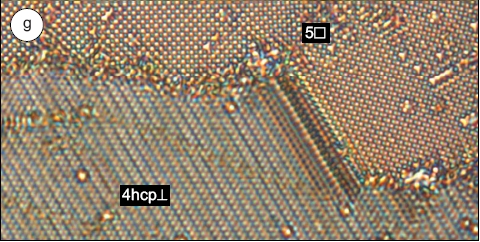Topics
Scope of ConferenceSoft matter in general and colloidal dispersions in particular are characterized by their susceptibility to manipulation by even weak external fields. The scientific focus of the conference is on the physics of colloids in confining geometries, under shear, as well as in electric, laser-optical and magnetic fields. Self-organization phenomena in equilibrium and non-equilibrium, where colloidal dispersions play a pivotal role as model systems, will be discussed. Particular emphasis will be put on the combined use of complementary methods, such as experiment, computer simulation and theory.The conference is held in conjunction with the Collaborative Research Center Transregio SFB TR6 with the title "Physics of Colloidal Dispersions in External Fields". It is the third conference in a series that was started in 2004 by the CODEF I meeting and continued in 2008 by the CODEF II meeting. |
Specific topics include
|
Basic concepts of the Transregio SFB TR6 "Physics of Colloidal Dispersions in External Fields"The Transregio-Sonderforschungsbereich TR6 is focused on the rich physics of colloidal dispersions. The latter are solutions of mesoscopic solid particles with a stable (i.e. non-fluctuating) core embedded in a molecular fluid solvent. Among the various soft matter systems, colloidal dispersions play a prominent role as they can be both prepared and characterized in a controlled way. The effective interaction between the colloidal particles can be tailored by changing, e.g., the salt concentration in the solvent. Moreover, colloidal suspensions can be regarded as the simplest prototype of soft matter: the length scale separation between the molecular solvent and the mesoscopic particles is unique and complete. Spherical particles without any additional structure on the mesoscopic length scale possess the simplest and highest possible symmetry. This directly implies that a simple theoretical modelling of a single particle without many fitting parameters is possible. Exciting questions concern collective many-body effects induced by cooperation and self-organization of many particles. A striking advantage of colloidal dispersions lies in the fact that these questions can be studied simultaneously by using three different complementary methods, namely experiment, computer simulation, and theory.A profound theoretical understanding also provides an insight into the general basic principles and mechanisms of phase transformations such that colloids play an exposed role as model systems for condensed matter in general. We expect that colloids will play a similarly dominant role in exploring changes of soft matter properties in external fields which can be used to control the colloidal samples. This question is the central research topic in the Transregio-Sonderforschungsbereich. Bulk phase transitions of colloidal soft matter are meanwhile well-understood but important questions in confining geometries and additional external fields are still open. Such fields can be realized by a shear flow or by the presence of electric and magnetic as well as laser-optical fields and topographical fields such as confining geometry. The motivation to study an external control via external fields has two main reasons: i) First, by definition, soft matter reacts sensitively upon external perturbations and manipulations. The occurrence of stable colloidal bulk samples is the exception rather than the rule, i.e., one has to protect the sample carefully against shear and other perturbations. ii) The second reason is that strong external fields can induce qualitatively novel effects which are discovered and described within the Transregio-Sonderforschungsbereich TR6. 39 scientists from 5 locations (Konstanz, Mainz, Düsseldorf, FZ Jülich and Utrecht) are doing research together. The external fields can be:  A: shear flow
A: shear flow B: electric fields C: laser-optical and magnetic fields D: confining geometries |
|
